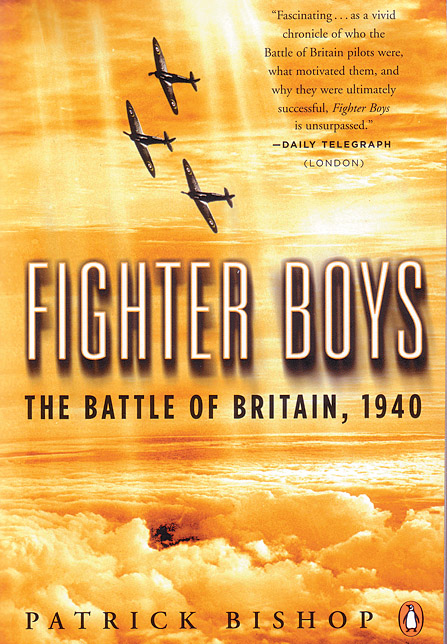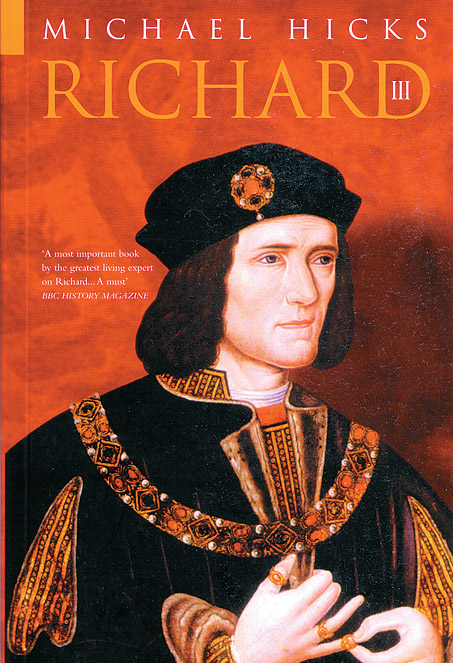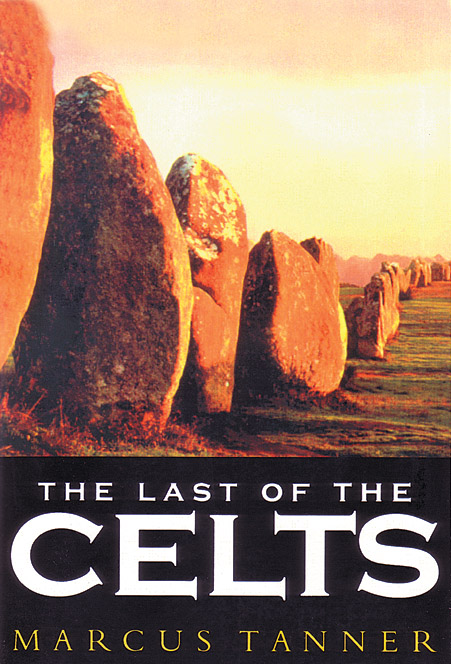
Fighter Boys: The Battle of Britain, 1940, by Patrick Bishop, published by Penguin Books, New York, 448 pages, softcover $16, www.penguin.com
OVERLOOKING the meadow of Runnymede next to the River Thames, the Air Forces Memorial honors the 20,389 RAF and Commonwealth airmen and women who died in World War II and have no known grave. Above the arch leading into the quiet cloisters are the words Per Ardua ad Astra, the motto of the Royal Air Force.
“By endeavor to the stars” is what the words mean. No group of young men ever embodied that challenge like the “fighter boys” of the RAF in the early years of World War II. In Fighter Boys: The Battle of Britain, 1940, Patrick Bishop tells the story of the great air campaign through the eyes of the fighter pilots themselves.
These are “the few” to whom so many owe so much. Most were in their teens and 20s when they took to the skies above Britain and France in their Hurricanes and Spitfires. Many did not return. Fighter Boys takes the reader into their cockpits and dogfights, dispersal rooms and squadron messes, pubs and letters home. It is a deeply human and poignant story, of bravery and bellicosity to be sure, but also of resignation and resilience, and of the struggle to function despite fear.
Neither WWII nor war as social history is everyone’s pint of beer, but if you are at all tempted to read this book, you will almost certainly love it. Bishop tells the story chronologically, with a brief look back at the RAF’s beginnings, including its use of observation planes over the trenches of World War I. The narrative hits stride with the belated buildup to war in the late 1930s—when the RAF was still flying biplanes.
[caption id="TheLatestBooksAboutBritain_img1" align="aligncenter" width="447"]

Bishop probed the memories, letters and diaries of scores of surviving pilots. The result is a history of Fighter Command that is personal and intimate; squadrons are not pins on a map but airmen of flesh and bone, and personality. From the despair of Dunkirk to September 1940, when the RAF finally controlled the airspace of Britain, we live with the fatigue, exhilaration and fate of the fighter boys—so many of whom never returned from their sorties.
There are hundreds of books about the war, and many about the pivotal Battle of Britain. Few of them can match the clarity of writing,let alone the human portraiture, of Patrick Bishop’s account here. Fighter Boys deserves to be a classic.
DANA HUNTLEY
Richard III, by Michael Hicks, published by Tempus and distributed in the United States by Trafalgar Square, North Pomfret, Vt., 303 pages, softcover $17.95, www.tempus-publishing.com.
IT WOULD be unconscionable to begin this review without warning all members of the Richard III Society to sit down before reading what follows. Michael Hicks, recognized by the BBC as “the greatest living expert on Richard,” writes in this new book that “by July 1483 the Princes in the Tower had already disappeared…. Most likely Richard killed them….
[caption id="TheLatestBooksAboutBritain_img2" align="aligncenter" width="453"]

Almost as provocative as that assertion, though, is the author’s premise that as far as history’s verdict on Richard’s character goes, his guilt or innocence in the case of the princes hardly matters. In fact, apart from the telegraphic conclusion mentioned above, Hicks hardly refers to the mystery of their disappearance at all throughout the course of his detailed and insightful investigation into Richard’s rise and fall. His examination of Richard’s conduct toward those entrusted to his care while he was Duke of Gloucester, though, does prompt the verdict that “His treatment of those inadvertently in his power offers precedents enough to justify the ‘sinister rumor’ in 1483 that Richard as Protector of Edward V ‘had brought his nephew [Edward V] not under his care but into his power.’”
So much has already been written about the fate of the princes that one more conclusion, even by an expert of Hicks’ caliber, will unlikely put the matter to rest and will only serve to stir the pot of speculation and countercharge. Rather than dwell on this unproductive ground, Hicks instead constructs a carefully reasoned analysis—not really a full biography—of Richard’s brief adult life. This more broad-based approach to the events leading up to Richard’s “usurpation” and then his 26-month reign amounts to a nonvituperative breath of fresh air that is…well, refreshing.
This is not to say, however, that fervent Ricardians will accept all that Hicks concludes about their beloved king with unqualified pleasure. His attempt to dispassionately reconstruct Richard’s motivations during the years from 1471 until his coronation paints a picture of an acquisitive, ambitious man who was prepared to make the most of every opportunity to advance his personal status. While giving scant credence to unsupported stories about Richard’s allegedly abnormal birth and his physical deformities, Hicks reminds readers that perfectly hale and hearty specimens of manhood, too, can sometimes behave villainously. Although Richard consciously cultivated his own reputation, Hicks notes: "Repeatedly reality departs from Richard’s chosen image. The more we know, the more Richard, as Duke, resembles his traditional reputation.”
Hicks bases his conclusions not on any dramatic, newly discovered documents but upon the savvy understanding that where well-documented facts and unambiguous proofs are few, Richard’s record as Duke of Gloucester is the best indication of what prompted his later execution of Lords Rivers and Hastings, his custody of the princes, his declaration of their illegitimacy and the many other actions that defined those puzzling days in 1483 that have been the subject of so much speculation.
Among the many insights that Hicks brings to the fore is one intriguing observation that shows that, in one regard at least, Richard was motivated by very much the same needs as one particular member of the Tudor dynasty that supplanted him. Whether or not he sat on the throne justly, a key to winning the confidence of his subjects was producing an heir who could ensure that there would be a smooth transition of power upon his death. His son Edward, the Prince of Wales, gave him just that until Edward’s untimely demise in April 1484. From that moment forward, Hicks notes: “What Richard really needed was a son, but Queen Anne apparently could not oblige. To have another son, Richard needed another wife….It was said by many that the king was applying his mind in every way to contracting a marriage ¼either after the death of the queen or by means of a divorce for which he believed he had sufficient grounds.”
One is tempted to imagine Henry VIII, a generation later, reminiscing about the fall of Richard and thinking of him as a royal soul mate.
BRUCE HEYDT
The Secret Voyage of Sir Francis Drake: 1577-1580, by Samuel Bawlf, published by Penguin Books, New York, 400 pages, softcover $15, www.penguin.com
FRANCIS DRAKE secured a place in history and in the hearts of his countrymen by his semiofficial campaigns against the Spanish colonies in the New World. Likewise, had he achieved nothing else during his lifetime, he would still be remembered as a great hero solely on the basis of his role in the defeat of the Spanish Armada. And again, even if he had not fought against the Armada in 1588, he would be famous for “singeing the beard” of King Philip of Spain by attacking the Spanish fleet in its home port of Cadiz in 1587.
Any one of these three accomplishments would have been cause for Drake to look back over his naval career with a deep sense of satisfaction. Yet Drake himself considered none of them to be his greatest feat in the service of his queen and his country. Rather, he took greatest satisfaction in a voyage of discovery he had made in search of the fabled Northwest Passage, a short route from England to the Orient that his contemporaries believed to be an essential precursor to making England into a colonial power that could rival Portugal and Spain.
To Drake’s frustration, this effort was so politically and economically sensitive that all accounts of his voyage were either heavily edited or suppressed altogether, lest the Spanish learn of his discoveries and preempt England’s plans to establish permanent colonies in the land Drake named “New Albion.”
Published accounts of Drake’s voyage—which included the first extensive European exploration of North America’s Pacific Northwest—therefore led readers to believe he ventured only as far north as the present-day state of Washington. In this book, however, Samuel Bawlf examines the evidence that Drake sailed as far north as Alaska, and that he became erroneously convinced that he had discovered the Northwest Passage.
Speculation about the exact site of New Albion is nothing new, and not everyone will agree with Bawlf’s interpretation. He presents his evidence carefully, however, and relies on no unwarranted assumptions. Bawlf’s account of Drake’s historic voyage first parallels the official version, relating how Drake first took a number of Spanish vessels off the coast of South America and captured a substantial treasure, then fled north only briefly before making a dash across the Pacific on the next leg of his around-the-world voyage.
Bawlf notes only briefly that the dates of Drake’s landfall at various islands along the way make no sense as recorded in the official record of the journey. At one point, for example, the published accounts claim he spent a full month in transit between two locations that are, in fact, only three miles apart.
Bawlf’s belief is that such fudging was necessary in order to conceal the fact that Drake spent much more time than indicated sailing the waters of the Pacific Northwest. After telling the story of Drake’s return to England and of the rest of his life (which included several attempts to persuade Queen Elizabeth to allow him to publish a complete and true account of the voyage), Bawlf takes readers back once again to the Pacific Ocean in 1579 and reconstructs what he believes to be a more accurate record of Drake’s long route home.
Sadly, Drake’s own charts and logs, kept secret for so long, are now lost—possibly destroyed in the fire that tore through Whitehall Palace in 1698. So Drake’s fervent desire that posterity might know all the details of his remarkable voyage may never be fulfilled. Bawlf has had to draw some conclusions based on leaked information and tantalizing clues hidden in contemporary maps.
The lack of unambiguous records of Drake’s exact route makes it impossible to say for certain that Bawlf is correct in every detail, but of course it’s the very same uncertainty that makes the retelling of Drake’s secret voyage so enjoyably intriguing.
BRUCE HEYDT
The Last of the Celts, by Marcus Tanner, Yale University Press, New Haven, Conn., 398 pages, hardcover $30, www.yalepress.yale.edu/yupbooks
[caption id="TheLatestBooksAboutBritain_img3" align="aligncenter" width="451"]

AUTHOR MARCUS Tanner became interested in the Welsh language when he tracked down the graves of his ancestors. Unable to read the headstones, he began to study Welsh. From there he went on to follow the trail that the languages of the isles of Great Britain and Ireland had taken after the advancing Anglo-Saxons and Normans pushed them to the fringes. His book covers the histories of Irish, Welsh, Manx, Cornish, Gaelic and Breton in detail.
Tanner shows how religion played a large part in the promulgation and extinction of the languages. Where the native language was preached from the pulpit and printed in Bibles, such as in Wales, it flourished. Where the Anglican Church insisted on English, the native language withered and died. Some clerics saw the local language of their flocks as a source of heretical culture and sought to stamp it out.
Naturally, politics also had a role. For example, there was great interest and pride in speaking Irish until the new Republic of Ireland made the language compulsory. Some schools taught in the local language, while others punished pupils for using it.
Commerce and technology had the largest influence of all. The 19th and 20th centuries brought the people of the fringes and the English speakers into close contact.
The Isle of Man saw a huge erosion of Manx after frequent ferry service was established that brought the island a significant influx of tourists, most of them English-speaking. Moreover, films and television inevitably made English the dominant language everywhere, particularly among younger people.
Tanner didn’t just study the history of the Celts; he went out to find them. He traveled to each of the regions and countries to see for himself the remnants of the Celtic languages—to the Welsh settlements in Argentina, the Scots in Nova Scotia and the Bretons of Brittany. He talked with those who still spoke the language, and also looked at some of their older architecture, so his book is a bit of a Celtic travelogue as well.
The book is arranged by country or region, with a chapter for each. The detailed history included here is exhaustive, and the casual reader may want to skim over some of it.
Tanner’s travels reinforce the history and illustrate the tenuousness of the language’s remaining hold on the people. Though cultural practices such as poetry, music, dance and art are mentioned, these are not the focus of the book.
Tanner sees language as the centerpiece of culture. He quotes T.S. Eliot in his last chapter: “For the transmission of a culture—a peculiar way of thinking, feeling and behaving—and for its maintenance, there is no safeguard more reliable than a language.”
JUDY P. SOPRONYI





Comments